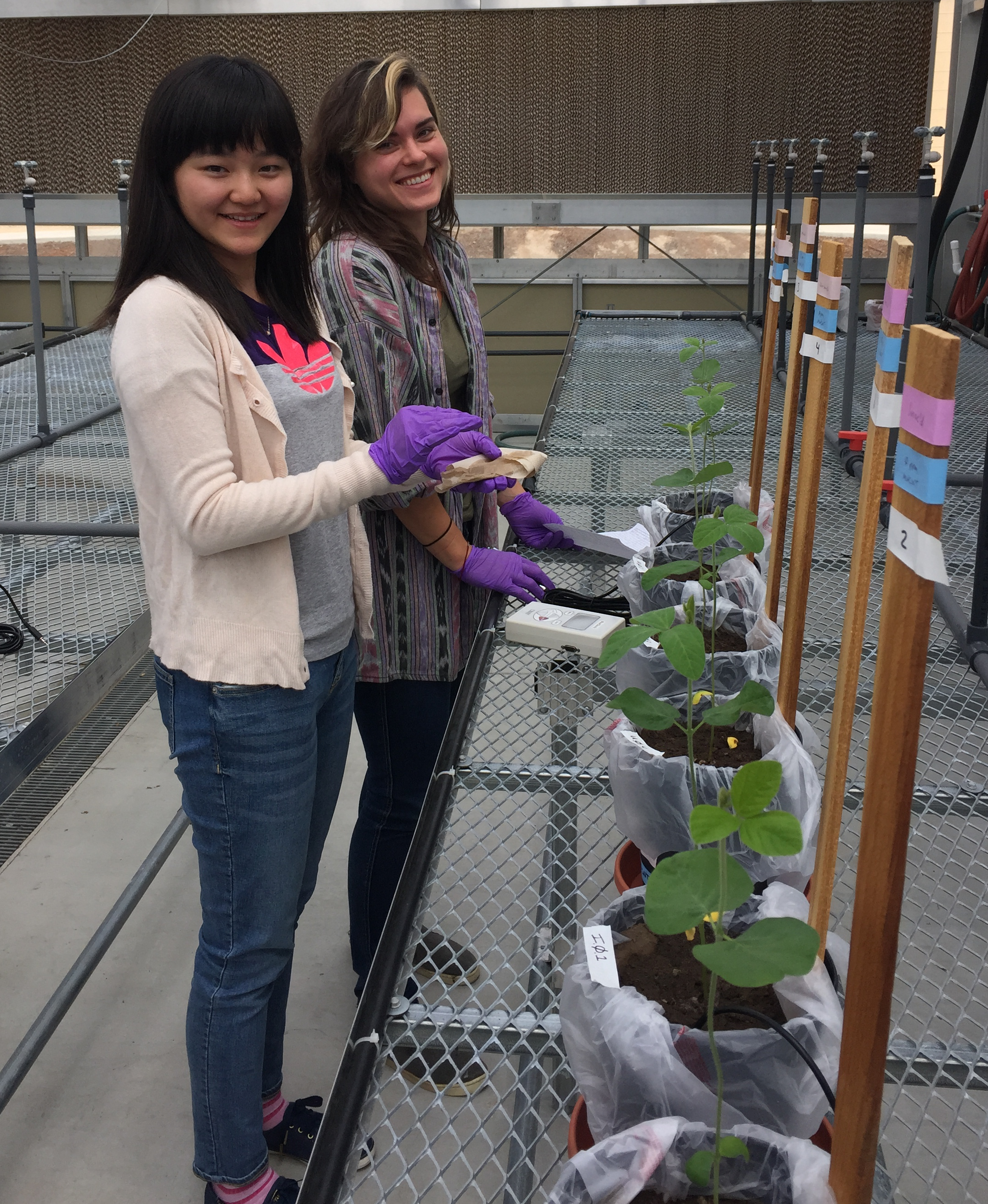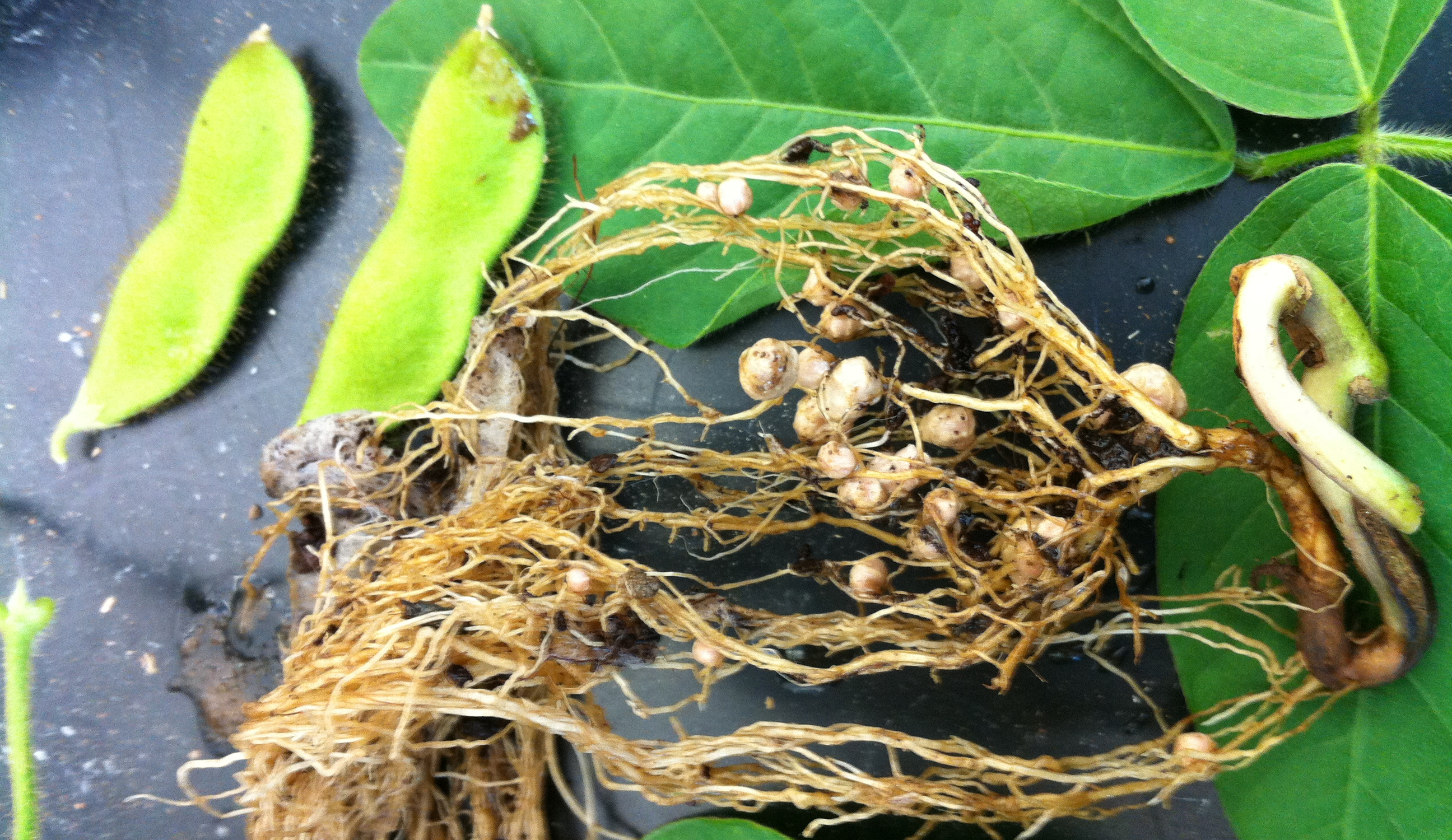

Engineered nanomaterials are now mainstream, i.e. used in consumer, industrial, and commercial products. Yet, there is a need for understanding how synthetic nanomaterials perform upon release into the environment. Microorganisms substantially determine the fates and hazards of anthropogenic materials entering the environment. We ask: how do engineered nanomaterials affect bacterial cells, populations, and communities; further, how do bacteria modify the structure and function of nanomaterials? The physical interactions and structuring of nanomaterials and cells, at the scale of microbes, significantly determine effects and feedbacks. How bacteria respond to engineered nanomaterial exposures may underpin effects on ecosystems. This research is mechanistic, using specific bacterial taxa relevant to soil and water ecosystem-level processes. It is also phenomenological, examining perturbations to microbial communities that are indicative of possible ecosystem level implications. Plant-microbe interactions relevant to agricultural production are a focus. In particular, we study the effects of synthetic nanomaterials on the capacity of soybean-bacterial symbioses to fix dinitrogen. The experimental systems include laboratory cultivation and mesocosms; methods include genetic sequencing, quantitative analytical chemistry, material characterization, physiological measures, and modeling. The studied synthetic nanomaterials include metal oxides (titania, ceria, zinc oxide), CdSe quantum dots, nano-Ag, carbonaceous nanomaterials including carbon black, carbon nanotubes, and graphene, and a 2-D analog composed of boron nitride. The work was initially funded by the U.S. EPA STAR program, in which we were among the inaugural Nanograntees. Beginning in 2008, we researched within the University of California Center for Environmental Implications of Nanotechnology (UC CEIN; http://www.cein.ucla.edu/new/), working closely with collaborators in material science, cell biology, plant physiology and chemistry, marine ecology, theoretical ecology, and environmental chemistry, to research across disciplines in support of informing nanosafety and safe nanomaterial design and implementation. Within the UC CEIN, we contributed to Theme 4 (Terrestrial Ecosystem Hazards and Implications) and led the Carbonaceous Nanomaterial Working Group. Collaborators have included Jay Nadeau (JPL, formerly McGill University), Galen Stucky (UCSB, https://labs.chem.ucsb.edu/stucky/galen/stuckygroup/), Ed Orias (UCSB, https://www.mcdb.ucsb.edu/people/faculty/eduardo-orias),
Jorge Gardea Torresdey (https://www.utep.edu/science/gardea/) and others within and outside of the UC CEIN. The work contributed to assessing safe handling and worker safety issues, including via cross-disciplinary industry surveys of workplace practices with Barbara Herr-Harthorn and Rich Applebaum (UCSB Center for Nanotechnology & Society, CNS, http://www.cns.ucsb.edu/), and Magali Delmas (UCLA Institute of the Environment and Sustainability, http://www.environment.ucla.edu/delmas/), conducted with students within Bren School MESM group projects (http://www.bren.ucsb.edu/research/masters_gp.htm) and co-led by Joseph Conti (https://sociology.wisc.edu/staff/conti-joseph-2/) and Cassandra Engeman (http://www.cns.ucsb.edu/people/cassandra-engeman).
updated 12-31-19

